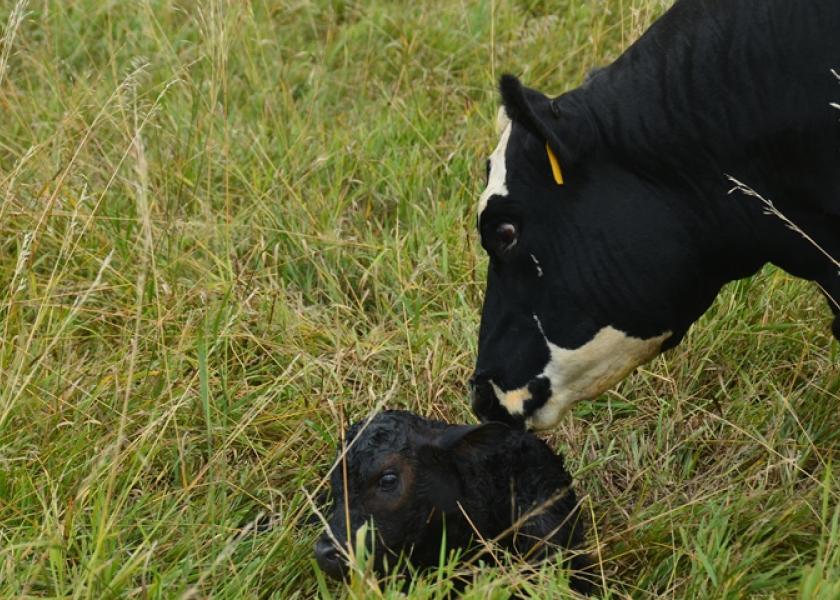Selk: The Third Stage of Calving: Shedding of Fetal Membranes

The process of “calving” or parturition in beef cattle is defined by three stages. Stage I occurs about 4 to 24 hours prior to calving. The major event during stage I is the dilation of the cervix. Stage II occurs in about 30 minutes in adult cows and about 1 hour in first calf heifers (when all goes well) and is the time when the calf passes through the birth canal and is delivered into the world. The third stage of calving is the shedding of the placenta or fetal membranes. In cattle this normally occurs in less than eight to 12 hours. The membranes are considered retained if after 12 hours they have not been shed. In some rare cases, the entire placenta is held in the uterus so there is no exposed portion. This condition may go unnoticed until the cow shows an abnormal uterine discharge or an odor characteristic of tissue degeneration.
The actual cause of a retained placenta is usually very difficult to pinpoint. Any time a cow calves prematurely, such as aborted fetus, delivering twins or triplets, induced calving, or premature delivery, the risk of a retained placenta is greatly increased. Vitamin and mineral deficiencies have also been linked to retained placentas. In dairy research, deficiencies of vitamins A and E have been implicated. Also insufficient dietary intakes of the minerals selenium and copper have been suggested as causes of retained placentas. However, supplementation with any of the vitamins or minerals implicated has not been shown to completely eliminate the risk of a retained placenta.
Years ago it was considered necessary to remove the membranes by manually unbuttoning the attachments. However, research has shown that improper manual removal can be detrimental to uterine health and future conception rates. Therefore, manually pulling on the retained placenta is strongly discouraged. When a cow calf operator notices a cow that “did not clean” in 12 hours after calving, close observation is suggested. If the cow shows any signs of ill health, such as droopy ears, lethargic behavior, or poor appetite, this may indicate that an infection of the uterus has begun. Contact your local large animal veterinarian for the proper management of the retained placenta. Prescribed administration of antibiotics usually will help against infection. Remember to follow the label recommended withdrawal date before marketing any cows that were treated with antibiotics. More information about working with cows and heifers at calving time can be found at the Oklahoma State University Extension publication E-1006 "Calving Time Management for Beef Cows and Heifers".







